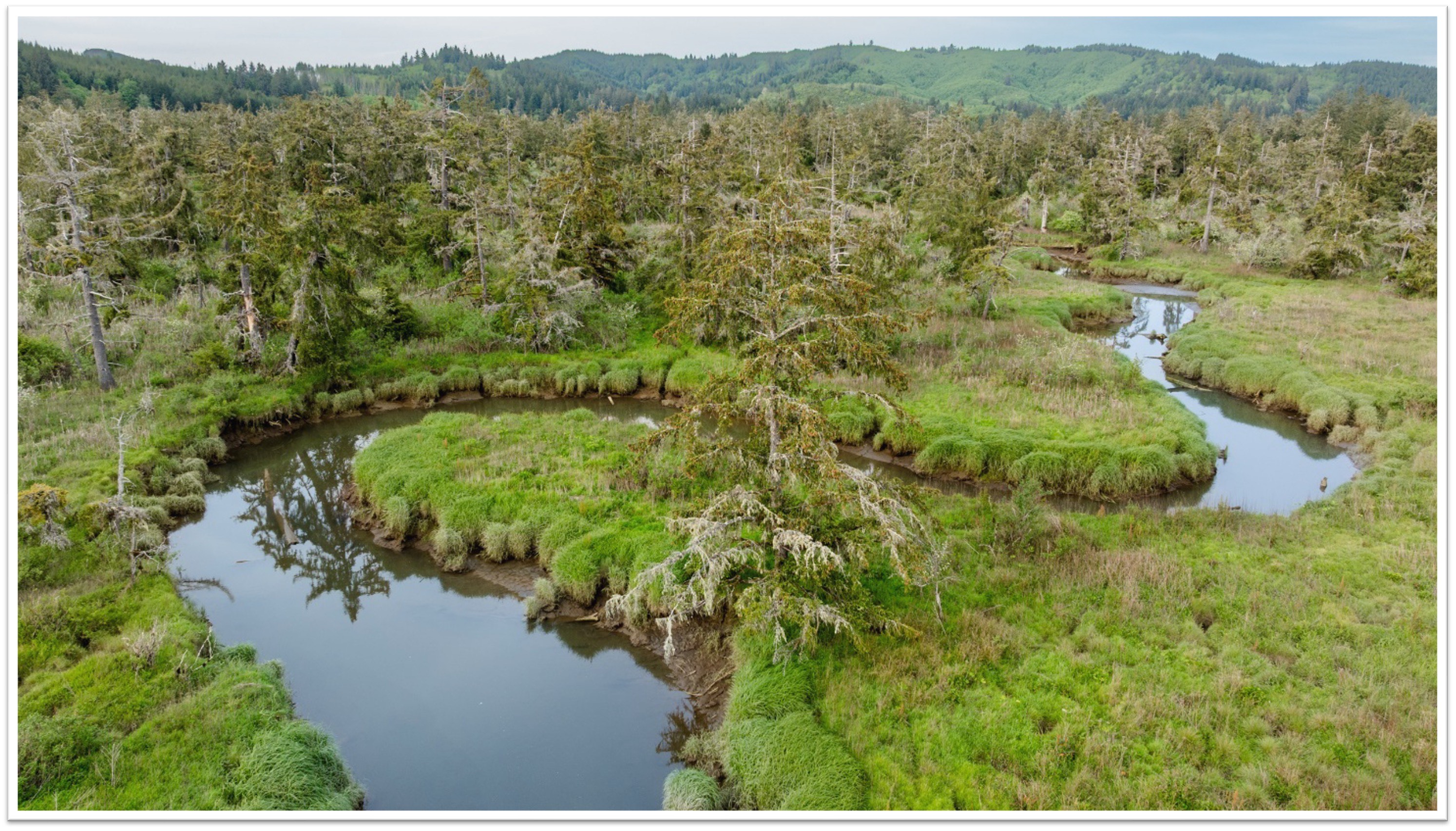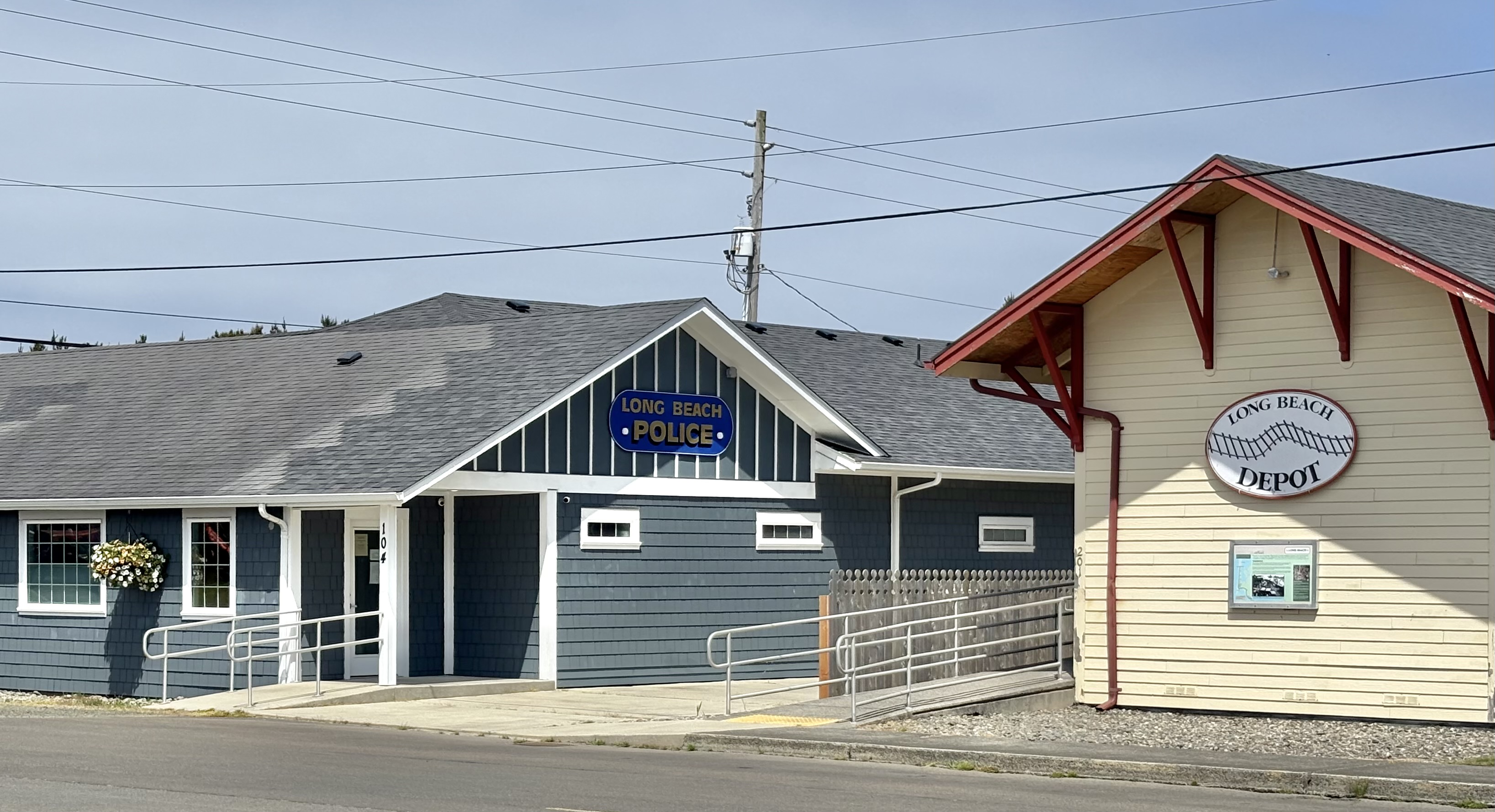The caboose was best!
Published 10:13 am Thursday, November 19, 2020

- Headed south, the Peninsula’s narrow-gauge train is shown stopped at the Long Beach Depot. There, a few years previously, Verna Smith and her brother and sister had arrived and departed each day so they could attend school. This photograph was taken after 1921 when the street had been widened to accommodate the growing number of automobiles on the Peninsula.
Verna Smith Oller was born Feb. 25, 1912, and was 95 years young when she and I talked about her growing up years on the Peninsula.
She was the third oldest of six children. Older than she were Albert, born in 1909, and Jane, born in 1910. Ralph, two years her junior, came along in 1914, followed by Margaret in 1916 and Daisy in 1921.
The family lived on Cranberry Road near the junction of today’s Pacific Highway. During Verna’s childhood, however, the only north-south “road” that ran the length of the Peninsula was the railroad. The tracks ran right beside the Smith’s house.
We went barefoot most of the time — not because we had to; because we wanted to. So, if we were walking any distance, we’d walk along the tracks. I favored walking on the rails. I have to laugh to think of that. I can’t even walk along a 12-inch-wide plank these days, but then I could travel easily on a three-inch rail! If we didn’t go on the tracks, we had to go through the woods and fields and there were lots of sandburs. We’d have to stop every once in a while to get them out of our feet. My, they hurt!
We all went to grade school in Long Beach which was three miles away. There was no transportation to the school at first, so Albert, the oldest, didn’t go until he was 7 and Jane was 6. That year there was a family living at Loomis Station, a little to the north of us. Renting the old Loomis house, you know. They had two school-age boys who went to school by horse and wagon so Albert and Jane rode with them.
The next year I was ready for school but that family at Loomis Station had moved away so Albert, Jane and I went on the train. The connections were pretty good, but we had to leave school a little early.
I had misbehaved at school one day and the teacher locked me in the closet which had a window in it. As I looked out the window, I saw my brother and sister heading for the train. I sure started crying. I don’t know if the teacher heard me or just remembered; anyway, she let me out and we all caught the train for home.
There were two girls from Ocean Park who also rode on the train going to high school in Ilwaco. I do not know of any other children going to school from the north by train, but one boy, Colurt Kalstrom, rode the train to Chinook School. There could have been others.
The passenger cars had coal burning stoves at one end and a privy at the other end. The toilets only had a seat to sit on and a bottomless bucket that funneled out on to the tracks. It could only be used where the population was sparse. They would come lock the door as we approached populated places and unlock it again after it became appropriate.
The car we liked the best was the caboose which was always the last car on the train. It seemed to be a little different and they didn’t carry it all the time. I looked up ‘caboose’ in the dictionary and it said ‘a freight-train car attached usually to the rear mainly for the use of the train crew and railroad workmen.’ I think it was the last car so they could easily drop it off if they wanted.
We rode the train to school for two years. After that, there was a sedan that came and picked us up. There were no roads through, so if the tide was out, the sedan drove on the beach. Otherwise it went through the fields. Of course, the fields were fenced and the gates were locked. But the sedan driver had keys for all of the gates.





